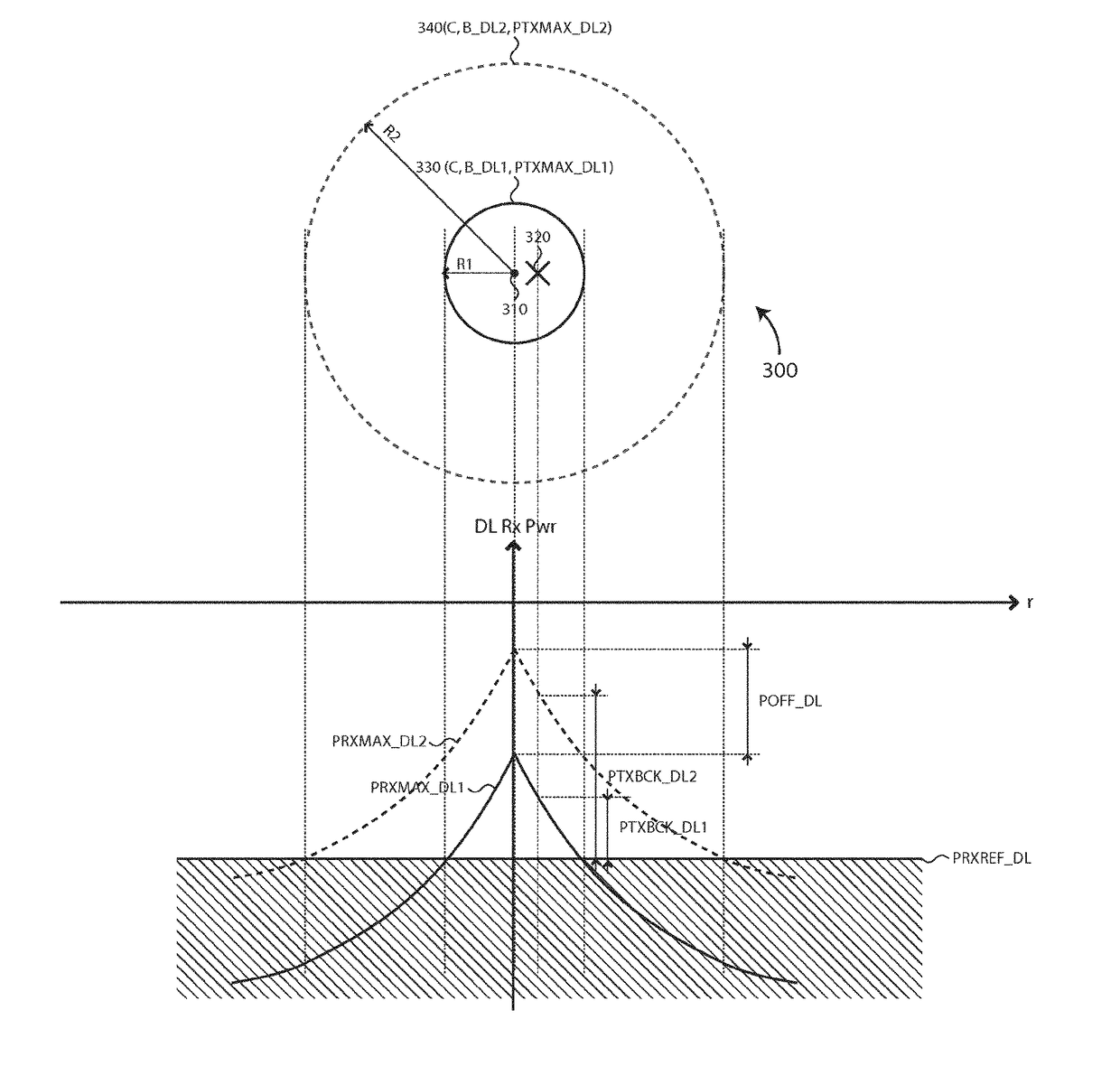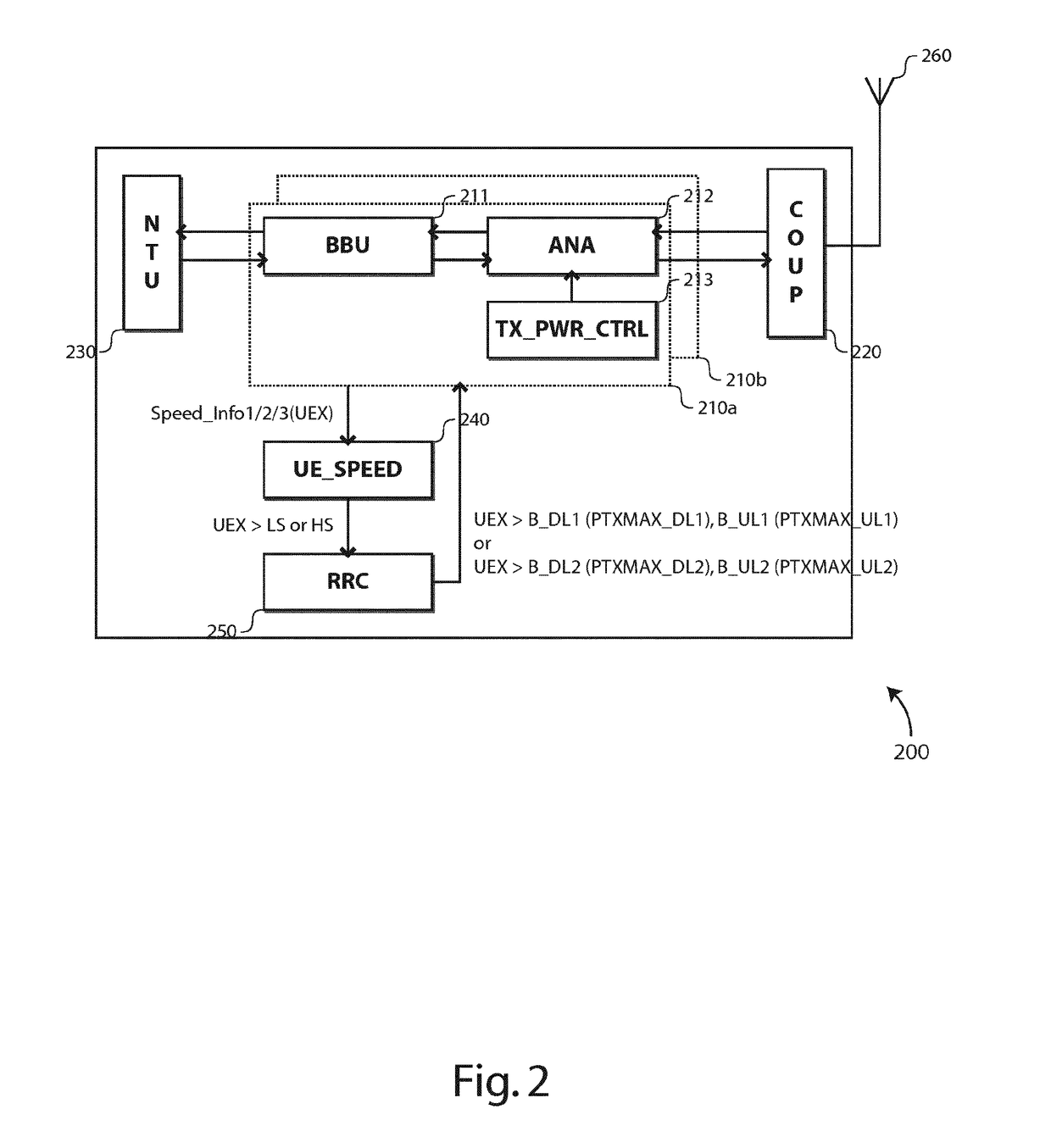Cell partitioning for high-speed users
a high-speed user and cell technology, applied in power management, electrical equipment, transmission, etc., can solve the problems of high-speed user mobility management, inefficiency at high speeds, and inability to arbitrarily reduce, so as to achieve the effect of reducing the complexity of implementation
- Summary
- Abstract
- Description
- Claims
- Application Information
AI Technical Summary
Benefits of technology
Problems solved by technology
Method used
Image
Examples
Embodiment Construction
[0044]There is seen in FIG. 1 a part 100 of LTE Radio Access Network (E-RAN) and an Evolved Packet Core (EPC) comprising the following network elements:[0045]Evolved NodeB (eNB) 110,[0046]a Mobility Management Entity (MME) 120,[0047]a Serving Gateway (S-GW) 130,[0048]a Packet Data Network (PDN) Gateway (P-GW) 140,[0049]a PDN 150, and[0050]a UE 160.
[0051]The eNBs 110 are coupled to the MME 120 through an S1-MME interface, and to the S-GW 130 through an S1-U interface. The S-GW 130 is further coupled to the P-GW 140 through an S5 interface. The P-GW 140 is further coupled to a PDN 150 through an SGi interface. The eNBs 120 establish neighbor relationships with neighboring eNBs through an X2 interface.
[0052]The eNBs 110 operate micro or pico cells with a small and confined coverage area, typically from a few tens meters up to a few hundreds meters. The eNBs 110 are configured to set up and operate a radio communication channel (i.e., a set of downlink and uplink traffic radio resources...
PUM
 Login to View More
Login to View More Abstract
Description
Claims
Application Information
 Login to View More
Login to View More - R&D
- Intellectual Property
- Life Sciences
- Materials
- Tech Scout
- Unparalleled Data Quality
- Higher Quality Content
- 60% Fewer Hallucinations
Browse by: Latest US Patents, China's latest patents, Technical Efficacy Thesaurus, Application Domain, Technology Topic, Popular Technical Reports.
© 2025 PatSnap. All rights reserved.Legal|Privacy policy|Modern Slavery Act Transparency Statement|Sitemap|About US| Contact US: help@patsnap.com



